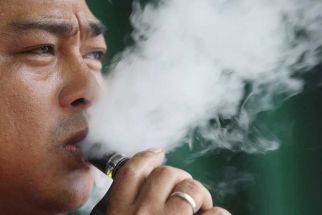Fake medicines on the rise

The multibillion dollar global industry of counterfeit drugs is robust and growing, thanks to ineffective efforts of international and local regulating agencies to stop its manufacturing and distribution activities.
The problem is perhaps older than the pharmaceutical industry, a case where unscrupulous individuals would peddle herbal concoctions made in backyards that were meant to deliver on a promise to cure or bring about some change in a person.
Many times, in the desire to sell more, a manufacturer would cut back on some “active†ingredients to be able to bring down costs. Still, there would be other measures taken to evade copyright laws, but which would affect the efficacy of the manufactured drug.
Indeed, the failure to regulate and prosecute fake drug manufacturers is as difficult and as complicated as the issue, which includes in the equation the environment where there are thousands of approved formulations for multiple variations of illnesses covering many ailments.
Counterfeiting statistics
According to the World Health Organization (WHO), the most commonly counterfeited drugs are antibiotics, hormones, analgesics, steroids, and antihistamines, largely following the prevalent illness of the times.
The most prevalent form of counterfeiting is a drug that has no active ingredient (32.1 percent), followed by having wrong ingredients (21.4 percent) and incorrect quantities of active ingredients (20.2 percent).
There are those that do not cheat on the correct formulation but copy the packaging of a popular brand (15.6 percent). And the worst form of counterfeiting is having high levels of impurities and contaminants (8.5 percent).
In whatever form of illegal drug manufacturing, there is the adverse effect on either the individual taking the drug or the legitimate manufacturer. For the former, a bad formulation could spell death; for the latter, this could mean millions of dollars lost.
Generics law
There is a social issue, though, when it comes to drugs that are exact copies of the popular, and often, highly effective originals. In fact, in the Philippines, this concern had given way for the passage of the Generics Law in 1988.
For decades, Filipinos had been buying significantly higher-priced drugs when companies based in countries like India and Thailand had been manufacturing at much lower prices and with government support in terms of protection.
It is now common knowledge how big multinational drug companies had influenced the importation ban of other brands in the Philippines to protect their market share and maintain their high level of profitability, of course at the expense mostly of our poor countrymen.
With the Generics Law, this issue has been relegated somewhat to the sidelines, with more Filipinos able to afford a wide range of medication for prevalent ailments like hypertension, diabetes, and antibiotics but at far affordable rates.
The widespread public acceptance of generic medication nowadays, however, has also paved the way for a wider distribution channel of counterfeit drugs. With many small neighborhood drugstores selling generic drugs, it has been harder to differentiate with true generics and fake ones.
In this instance, the best way to curb this malady, which Philippine doctors and pharmaceutical experts account as affecting 10 percent of the local industry, is widespread consumer education, which includes advice to buy only from reputable drugstores.
Slimming and whitening products
This will help tackle also the growing problem that has been spawned by multilevel marketing initiatives or online sites that sell “medications†with the promise of weight loss or whitened skin, but which actually directly or indirectly harm the users.
Slimming teas or drugs, resulting largely from a growing number of obesity problems as well as fashion trends that encourage weight loss, may contain harmful ingredients like amphetamine, sibutramine, and steroids that cause irreparable damage to a person’s health.
Many skin lightening products, on the other hand, contain higher-than-allowable levels of mercury which inhibits the formation of melanin to give a lighter skin to the user, but which may also cause skin rashes, skin discoloration, scarring, and in worse cases, damage to the kidneys.
Whitening medication, either as pills or lotions, are culturally-induced but not limited to nationalities with dark skin like Filipinos and Africans. These products are also popular among women in China, Korea, and Japan where snow-white skin commands a premium.
Many of these products are sold by word-of-mouth, and through testimonials of effectiveness. The ban in the Philippines is dependent on the manufacturer, but in many developed countries, the mere presence of mercury is already a cause for its prohibition.
Smuggling and ineffective policing
Even with regulations calling for the registration of such slimming drinks or whitening products, many brands are imported or smuggled into the country without going through the proper documentation and testing process by the local Food and Drug Administration.
Likewise, local governments are often remiss about policing against the proliferation of these unregistered products, especially if these are distributed through networking channels.
Again, with the widespread use of these harmful products, the best course of action taken is public education for users to heed only the prescription of doctors and specialists, even if this would at face-value seem more expensive.
The downside to taking self-prescriptions, however the huge difference in product prices, is of course the risk of being afflicted by a more debilitating condition arising from the presence of harmful ingredients. In the end, it could be more costly – or deathly.
Facebook and Twitter
We are actively using two social networking websites to reach out more often and even interact with and engage our readers, friends and colleagues in the various areas of interest that I tackle in my column. Please like us at www.facebook.com and follow us at www.twitter.com/ReyGamboa.
Should you wish to share any insights, write me at Link Edge, 25th Floor, 139 Corporate Center, Valero Street, Salcedo Village, 1227 Makati City. Or e-mail me at [email protected]. For a compilation of previous articles, visit www.BizlinksPhilippines.net.
- Latest
- Trending
































